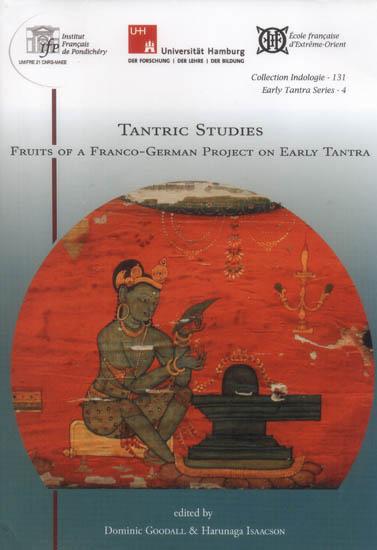
| Specifications |
| Publisher: Institut Francais De Pondichery | |
| Author: Dominic Goodall and Harunaga Isaacson | |
| Language: English | |
| Pages: 352 (14 Color Illustrations) | |
| Cover: Paperback | |
| 10.0 inch X 7.0 inch | |
| Weight 690 gm | |
| Edition: 2016 | |
| ISBN: 9782855392202 | |
| NAM222 |
| Delivery and Return Policies |
| Ships in 1-3 days | |
| Returns and Exchanges accepted within 7 days | |
| Free Delivery |
The principal works that have emerged from our stimulating project on ‘Early Tantra’ are critical editions and translations of previously unpublished primary material, which have begun to appear in this new series. This volume complements those publications by gathering together some of the fruits, direct and indirect, of the wide-ranging discussions that took place during the project’s workshops. By way of introduction, the volume opens with an attempt by the editors to draw together our findings about the “Shared ritual syntax “ of some of the earliest known works of tantric traditions, with a particular emphasis on the Buddhist Manjusriyamulakalpa and the Saiva Nisavastattvasambita. Seven further contribution, by Dominic Goodall, Peter Bisschop, Judit Torzsok, Diwakar Acharya, Anna A. Slaczka, Libbie Mills and Peter-Daniel Szanto, throw light on a wide range of topics: the Saiva tattvas and their evolution, yogini-temples, alphabet-deities, an early treatise of snake-related magic, iconographic prescriptions in early pratisthatantras, the implications of the use of the bhutasankhya system, and a fragment of a Buddhist tantric sadhana.
Harunaga Isaacon studied in Groningen (MA 1990) and was awarded a PhD in Sanskrit by the University of Leiden in 1995. After holding position for research and teachings at the Universities of Oxford, Hamburg and Pennsylvania, he was appointed Professor of Classical Indology in the Department of Indian and Tibetan Studies, Asien-Afrika-Institut, Humburg in 2006. His main research areas are: tantric traditions in pre-13th-centruy South Asia, especially Vajrayana Buddhism; classical Sanskrit poetry; classical Indian philosophy; and Puranic literature.
After studies in Oxford and in Hamburg Dominic Goodall passed several years working in Pondicherry, where he was head of the Pondicherry Centre if the Ecole francaise d’Extreme-Orient from 2002 to 2011. He has published critical editions of Saiva works and of classical Sanskrit poetry (most recently, with Csaba Dezso, the eighth-century Kuttanimata of Damodaragupta). After four years in Paris, where he gave lectures on Cambodian and Indian Sanskrit literature at the Ecole pratique des hautes etudes (religious science section ), he is now back in Pondicherry.
This volume is one of the outcomes of the Franco-German project 'Early Tantra: Discovering the Interrelationships and Common Ritual Syntax of the Saiva, Buddhist, Vaisnava and Saura Traditions', a project which for just over three years was generously funded by the Agence Nationale de la Recherche and the Deutsche Forschungsge- meinschaft. As part of this project, three international workshops were held, in Kathmandu (First International Workshop on Early Tantra, or FIWET, September 15-26, 2008), in Pondicherry (SIWET, July 20-31, 2009), and in Hamburg (TIWET, July 15-23, 2010). These workshops, which we believe all participants found both enjoyable and very fruitful, all had basically the same format: reading sessions in the morning and early afternoon, and presentations, usually of about an hour, in the latter part of the afternoon. Most of the papers appearing here in print have grown out of these IWET afternoon presentations, though some are fresh productions.
The principal works that this project enabled us to prepare were editions of previously unpublished early tantric texts. The titles of the volumes, all of which have appeared or will appear in this series, speak for themselves:
1. The Nisviisatattvasamhita: The Earliest Surviving Saiva Tantra. Volume 1. A Critical Edition and Annotated Translation of the Mulasutra, Uttarasutra and Noyasutra, ed. and trans. Dominic Goodall, in collaboration with Alexis Sanderson and Harunaga Isaacson with contributions of Nirajan Kafle, Diwakar Acharya and others, (Collection Indologie 128/Early Tantra Series 1), 2015.
2. Early Tantric Vaisnavism: Three Newly Discovered Works of the Pancaratra - The Svayambhuvapancaratra, Devamrtapancaratra and Astadasavidhana, Critically Edited from Their 11th- and 12th- Century Nepalese Palm-Leaf Manuscripts with an Introduction and Notes, ed. Diwakar Acharya, (Collection Indologie 129/Early Tantra Series 2), 2015.
3. The Brahmayamalatantra or Picumata. Volume 2. The Religious Observances and Sexual Rituals of the Tantric Practitioner: Chapters 3, 21, and 45. A Critical Edition and Annotated Translation, ed. and trans. Csaba Kiss, (Collection Indologie 130/Early Tantra Series 3),2015.
4. The Brahmayamalatantra or Picumata, Volume 1. A Study, Edition, and Translation of Chapters 1-2, 39-40, and 83, ed. and trans. Shaman Hatley, forthcoming.
5. The Nisvasamukha: The Introductory Book of the Nisvasatattvasamhita, Critical Edition, with an Introduction, Annotated Translation, Appended by Sivadharmasangraha 5-9, doctoral thesis submitted to the University of Leiden by Nirajan Kafle in 2015.
Along with these should be mentioned two works that have not yet been completed:
6. An edition of a previously unknown Trisamayarajatantratika by Harunaga Isaacson.
7. A critical edition of selected chapters of the Manjusriyamulakalpa by Martin Delhey.
In the course of this work, inspired in particular by a trail-blazing article of Sanderson (2001) 'History through Textual Criticism in the Study of Saivism, the Pancaratra and the Buddhist Yoginitantras' (see bibliography in Article 1), the above-mentioned scholars, and many others who joined us in our yearly workshops, reflected upon and discussed the relationships between the various tantric traditions, particularly in the realm of what Sanderson referred to as ritual 'syntax' (see the epigraph to our first article). This volume gathers together some of the fruits of those discussions.
Article 1
In the introductory paper by Dominic Goodall and Harunaga Isaacson, 'On the Shared "Ritual Syntax" of the Early Tantric Traditions', we attempt to set down concisely what we have learned about the shared ritual features of the early tantric traditions, as well as remarking on some that are not shared, and speculating a little from time to time about why they might not be shared. No doubt there is still much to discover in the way of similarities, and much that we have not yet noticed in the way of significant differences; but we hope that this may prove a useful beginning and a stimulus to others. A detailed summary of the contents of the paper seems superfluous here since the article has been broken down into many sections and sub-sections whose titles are presented in a table of contents at the beginning of the article.
Article 2
In the second article, 'How the Tattvas of Tantric Saivism Came to Be 36: The Evidence of the Nisvasatattuasamhita', Dominic Goodall considers the evolution of ideas that led to the classical Saiva doctrine that the universe is to be divided up into thirty-six tattvas, ranging from the coarsest, that of earth, at the bottom, to the subtlest, namely that of Siva, at the top, thus forming an ontological catalogue of what the universe contains and also a map of the levels of the Saiva cosmos. The article points out that the earliest tantric work accessible to us, namely the Mulasutra, contains no trace of this distinctive tantric doctrine and that subsequent layers of the Nisvasatattvasamhita reflect various stages in its evolution. The article proceeds to reflect upon how the tattvas that the Saivas added to extend the Sankhyas' ontological ladder might originally have been conceived.
Article 3
The starting-point for Peter Bisschop's article, 'A 12th-Century Varanasimahatmya and Its Account of a Hypethral Yogini- Temple', is a palm-leaf manuscript preserved in the Kaiser Library in Kathmandu that transmits a compendium of Puranic glorifications of Varanasi (Varanasimahatmyas). The first Mahatmya in the collection, tentatively dated to the 12th century, contains an extensive account of a hypethral Yogini temple in Varanasi, The Mahatmya is attributed in the manuscript to the Bhairavapradurbhava of the Matsyapurana, but the original composer may have intended to attribute it rather to the Bhairavapradurbhava of the Vamanapurana. After introducing this Mahatmya and its account of the Yogini temple in chapter 8, the article presents a critical edition and annotated synopsis of this chapter. The article adds significantly to our knowledge of the religious history of early medieval Varanasi and makes available for the first time a unique textual description of an early medieval Yogini temple.
Article 4
In 'The Emergence of the Alphabet Goddess Matrka in Early Saiva Tantras', Judit Torzsok attempts to sketch the early history of the cult of alphabet deities in Saiva and Sakta tantras. First, the power of letters and words seems to have been attributed to Siva himself; but this power then increasingly became personified as the goddess Matrka, whose name initially probably denoted just the alphabet itself. The post-Mulasutra layers of the Nisvasatattuasamhita already put much emphasis on the worship of Matrka, In subsequent scriptures of the Saiva Siddhanta, a male equivalent of this deity also appears. At the same time, another alphabet goddess, Malini, emerges in Sakta tantras, who represents the alphabet arranged in a particular order. Various homologisations evolve around these deities, who also become associated with series of Mother goddesses (matr). The exegetical literature makes ingenious use of all these deities when describing how sound and language become manifest in divine creation.
Article 5
Diwakar Acharya's paper 'Three Fragmentary Folios of a 9th-Century Manuscript of an Early Bhutatantra Taught by Mahamahesvara' edits and analyses the contents of three fragmentary folios of a 9th- century manuscript of an early Bhutatantra that is presented as the teaching of Mahamahesvara. Now Bhutavidya as a system of learning is known from early texts such as the Chandogyopanisad and the Caraka- and Susrutasamhitas. Similarly, Bhutatantra as a distinct genre of tantric literature is recorded in still relatively early sources. These fragments provide tangible evidence of the existence of this second genre in early times. They bear witness to a cult of Skanda viewed as the lord of all spirits and the soul of all living beings, with assemblies of different classes of seizers including the spirits, mother goddesses, serpent deities, and Yaksas in his retinue. The presence of Dhanvantari, too, is noteworthy. The fragments also include some details of austerities and observances.
Article 6
In 'The Two Iconographic Chapters from the Devyamata and the Art of Bengal', Anna A. Slaczka examines the iconographical prescriptions of a scripture that presents itself as a recension of the Nisvasa and that, unlike most published Sanskrit works devoted to image-in- stallation and temple-construction, is Northern and predates the 11th century. Whereas art-historians have tended hitherto to rely, for textual prescriptions of the iconographical themes that they study, on post-12th-century South Indian treatises, the Devyamata is transmitted in old Nepalese palm-leaf manuscripts and describes images unrelated to those known to us from the Tamil-speaking South from the Chola-period onwards. In fact the iconographic prescriptions of the Devyamata are in keeping with sculpture produced in Bengal during the 10th and 11th centuries. The article furnishes a critical edition and annotated translation of the work's iconographical prescriptions and discusses information about dating and provenance that can be gleaned from this section of the text.
Article 7
Early Saiva scriptures devoted to construction of temples and the installation of images (pratistha) show a wide disparity in the use of names for things employed as numbers (bhutasamkhya), with little or no usage in texts that can be, by other measures, placed earlier in the record, and significantly greater usage in texts that appear to be later. In her paper, 'Bhutasamkhyas as a Dating Tool for Pratistha Literature’, Libbie Mills proposes that we may be able to use this observation as a dating tool: that a piece of text from the early Saivapratistha corpus that shows the ready use of bhutasamkhyas may be judged more recent than a piece of text that shows no, or only sporadic, use of number words.
Article 8
In the paper 'Minor Vajrayana Texts I: A Fragment from Abhayakara- gupta's Srisamvarabhisamayopayika', Peter-Daniel Szanto presents an annotated critical edition of a hitherto unnoticed sadhana text in Sanskrit, the Sricakrasamvambhisamayopayika of Abhayakara-gupta. Unfortunately, our fragment is incomplete; the gaps are filled by synopses of missing contents inferred from the Tibetan translation. The introduction contextualises the work and argues that it is an important witness for the cult of Samvara/Samvara in Eastern India.
Having outlined the contents of this volume, it remains to us to thank those who have made its appearance possible. We are grateful, first of all, to the contributors, not only for their articles, but also for their considerable patience, for this volume was not far from ready five years ago, when we had intended it to appear as the second volume of the new journal Tantric Studies. Sadly, that journal foundered after the appearance of just one volume in 2009, in large part because it proved impossible for legal reasons to distribute it from the University of Hamburg. After several years of uncertain plans, we negotiated the relaunch of the journal with Brill at the end of 2014, before finally deciding that we were both so busy with other obligations that we would not be able to meet the expectations of the publisher and of future contributors in the coming years. We still think that a journal of Tantric Studies would be an excellent idea-how delightful it would be to find an issue brimful of fresh discoveries in this vigorous field of study dropped regularly upon the doormat twice a year!-, but we leave to other potential editors the pleasure of producing it. What we now offer instead is the first of what we intend to be a series of occasional volumes of essays on recent tantric discoveries.
It is our pleasant duty to express particular thanks to Barbara Schuler, whose tireless epistolary zeal and organisational rigour brought the volume together at a time when several of the contributors had probably been inclined to give up all hope. We should also like to thank Peter Pasedach for his professional handling of the typesetting, involving the creation of a bibliographical database that we trust will serve us well for future publications. Of course we are grateful also to our colleagues Valerie Gillet (EFEO) and Y. Subbarayalu (IFP), who have in recent years been responsible for the Collection Indologie. Finally, we should like to thank two individuals whose considerable efforts behind the scenes of the Collection Indologie are often not mentioned in print because they are most particularly active after the last words have been typeset, namely Anurupa Naik and Prerana Patel, at the IFP and the EFEO respectively, for it is they who typically mastermind the countless complexities of budgeting, scheduling, cover-design, paper-selection, trips to the press and so forth.
| Preface | VII | |
| Abbreviations | XIX | |
| List of Figures | XXI | |
| Notes on Contributors / A propos des contributeurs | XXIII | |
| 1 | On the Shared 'Ritual Syntax' of the Early Tantric Traditions | 1 |
| 2 | How the Tattvas of Tantric Saivism Came to Be 36: The Evidence of the Nisvasatattvasamhita | 77 |
| 3 | A 12th-Century Varanasimahatmya and Its Account of a Hypethral Yogini-Temple | 113 |
| 4 | The Emergence of the Alphabet Goddess Matrka in Early Saiva Tantras | 135 |
| 5 | Three Fragmentary Folios of a 9th-Century Manuscript of an Early Bhutatantra Taught by Mahamahesvara | 157 |
| 6 | The Two Iconographic Chapters from the Devyamata and the Art of Bengal | 181 |
| 7 | Bhutasamkhyas as a Dating Tool for Pratistha Literature | 247 |
| 8 | Minor Vajrayana Texts I: A Fragment from Abhayakaragupta's Srisamvarabhisamayopayika | 261 |
| Index | 297 | |
| Illustrations |
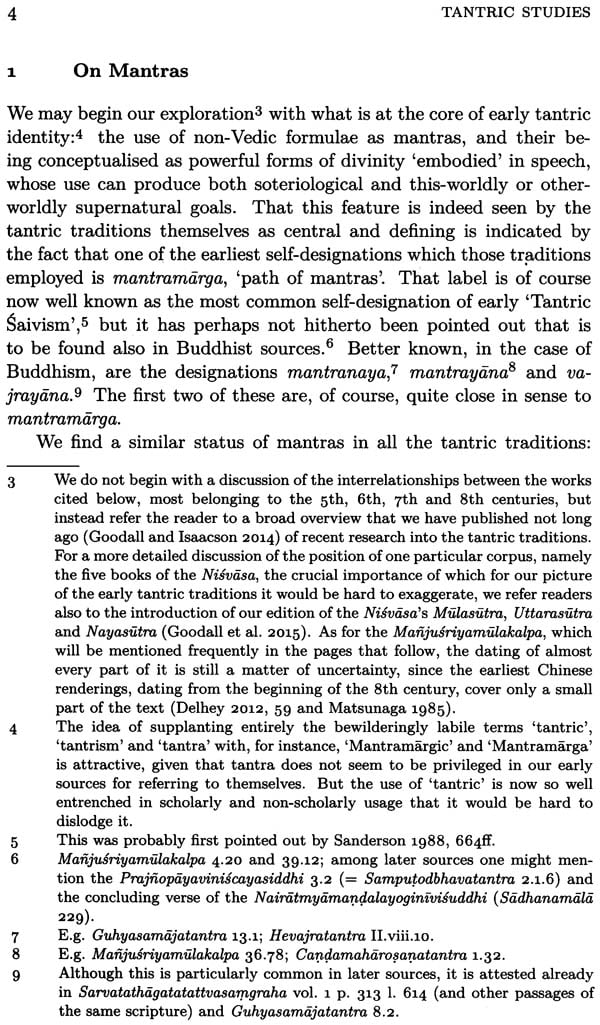
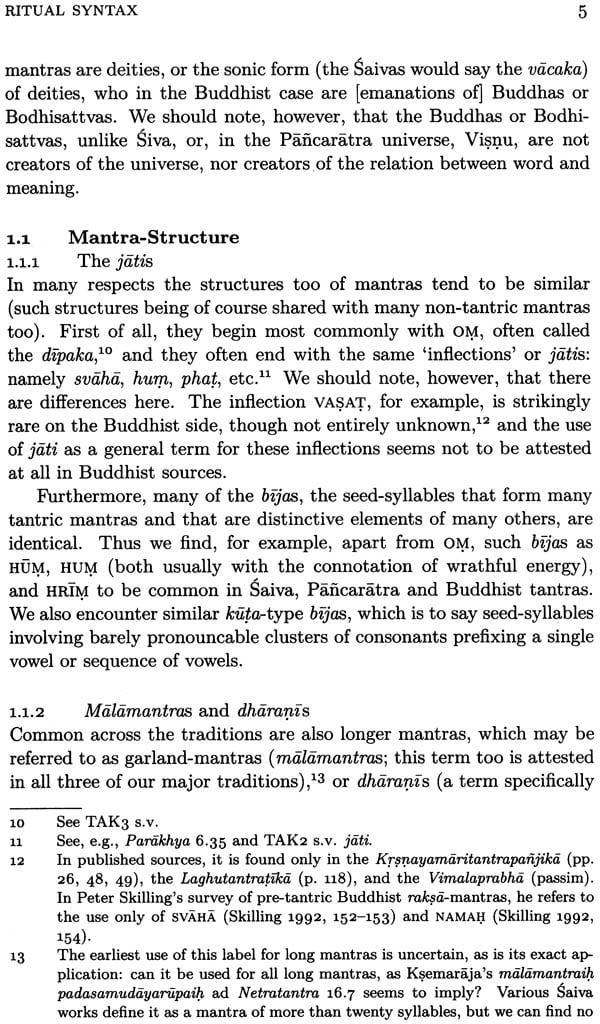
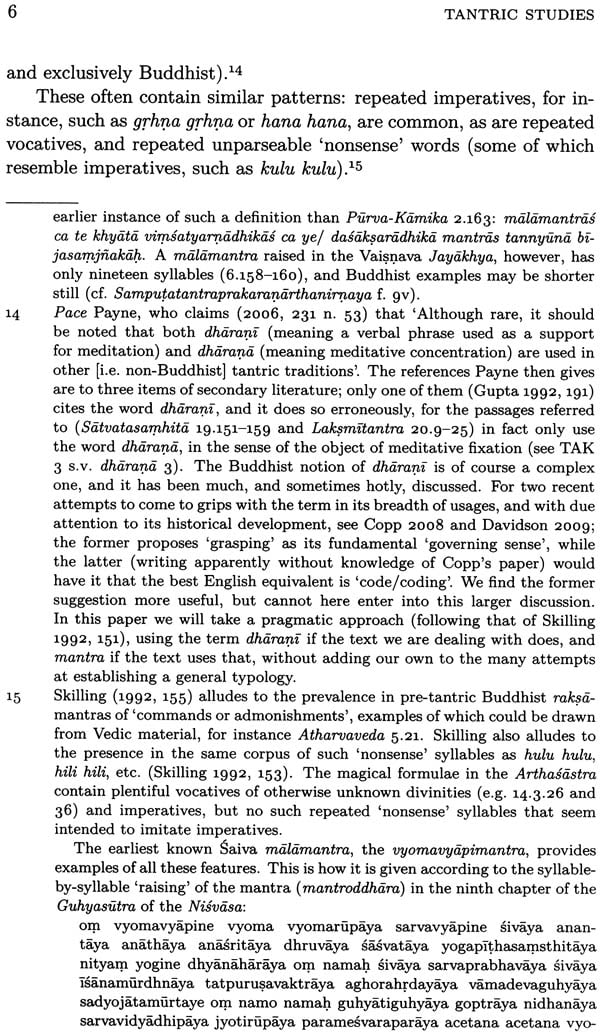
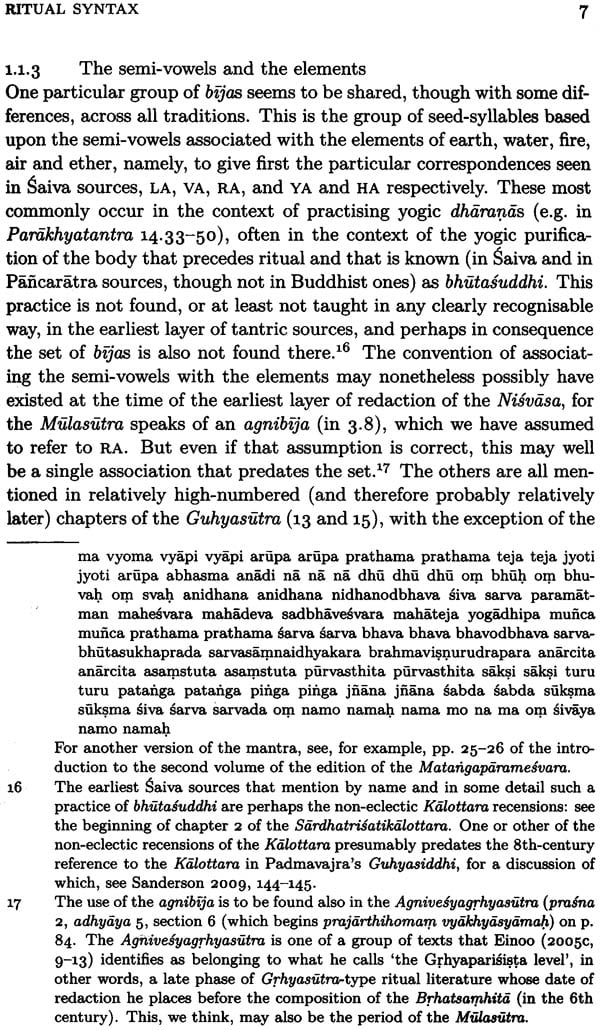
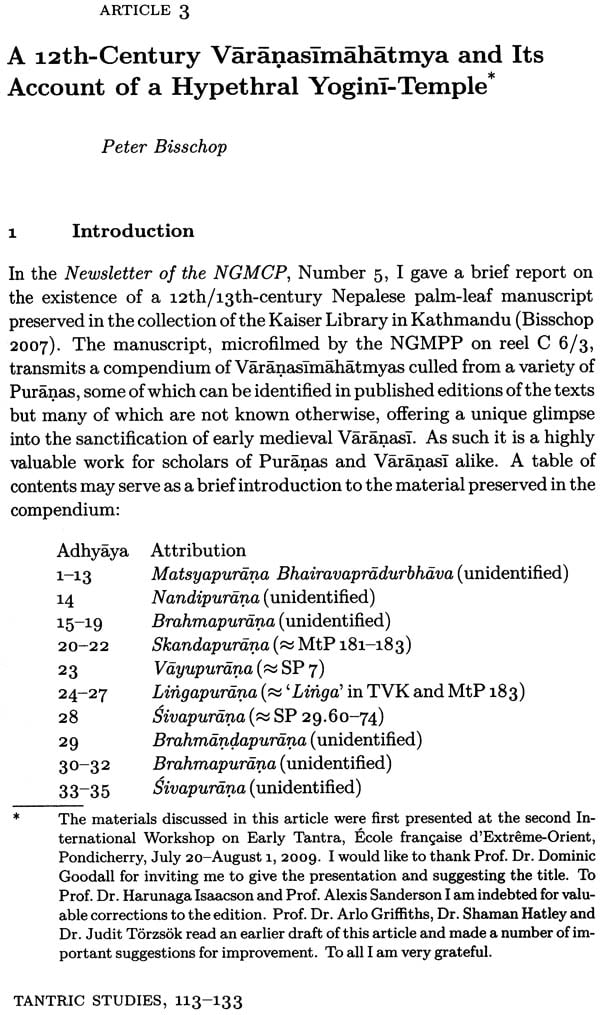

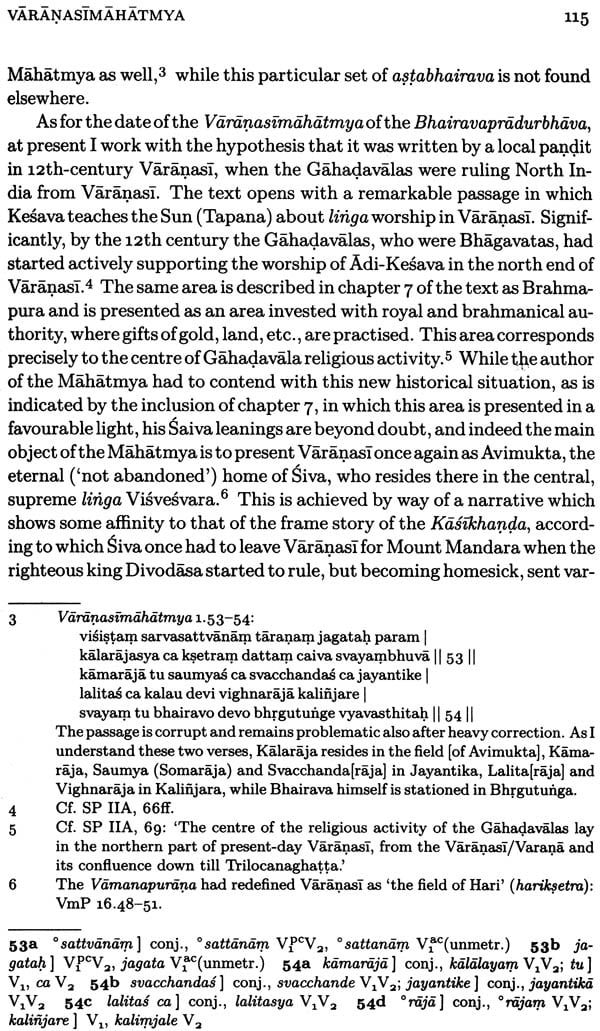
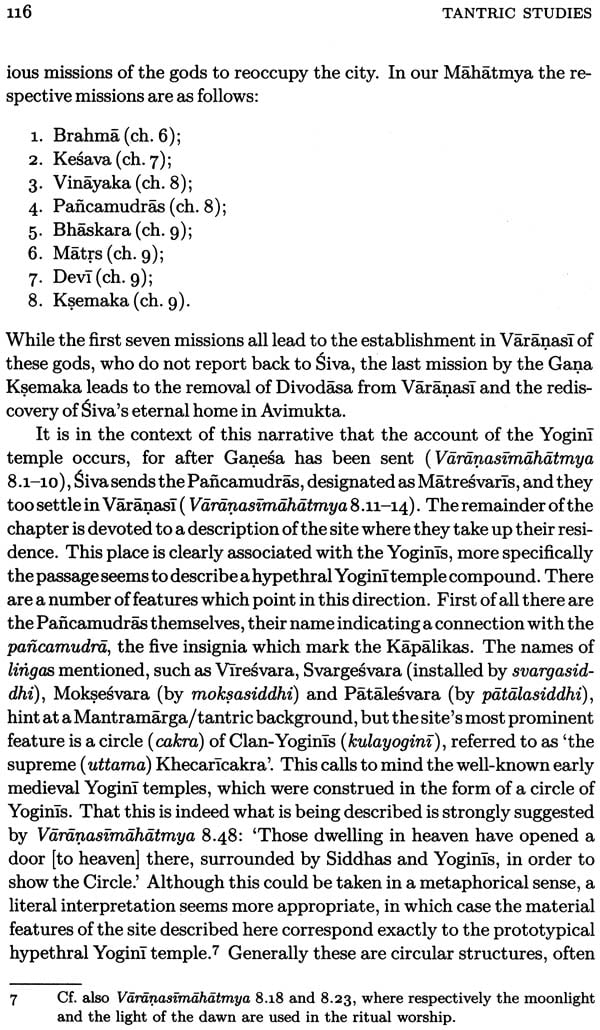
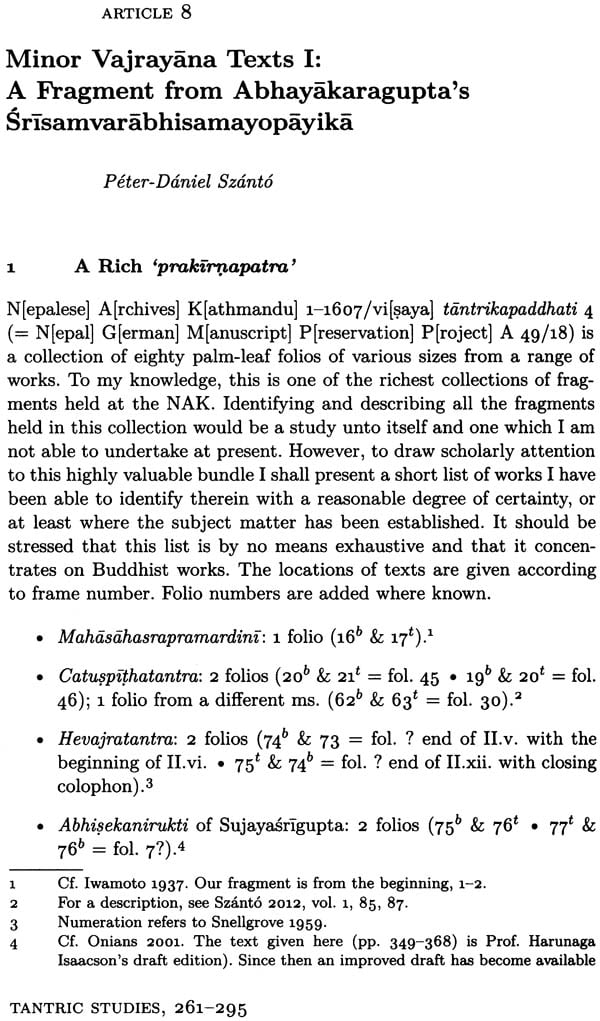
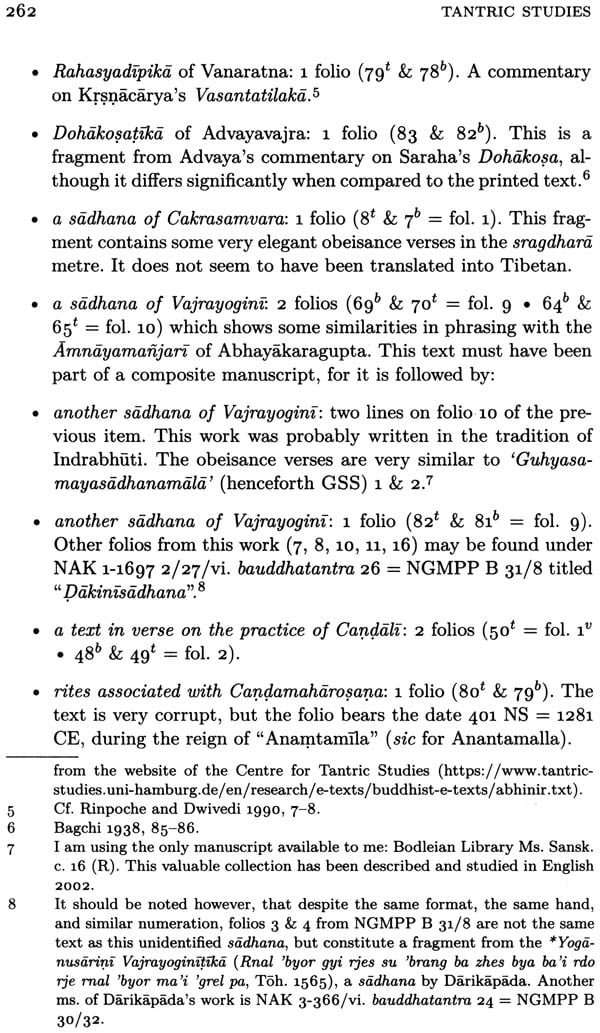
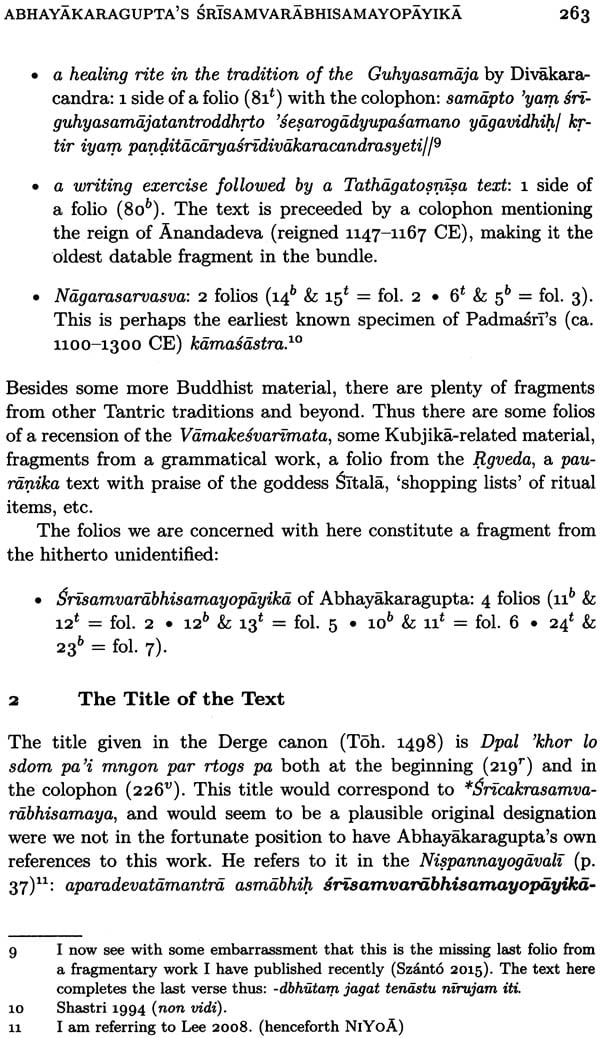
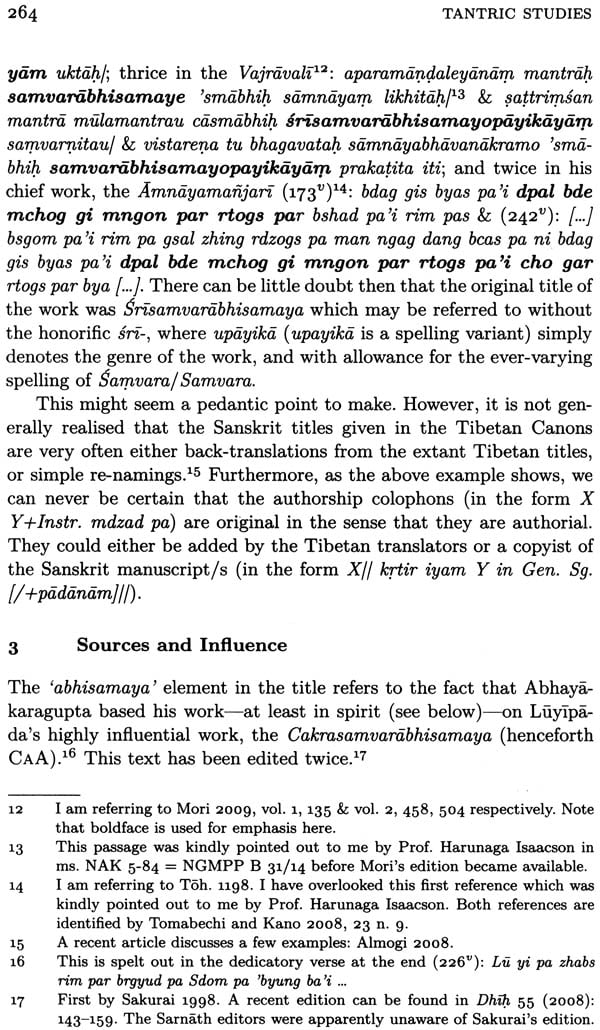
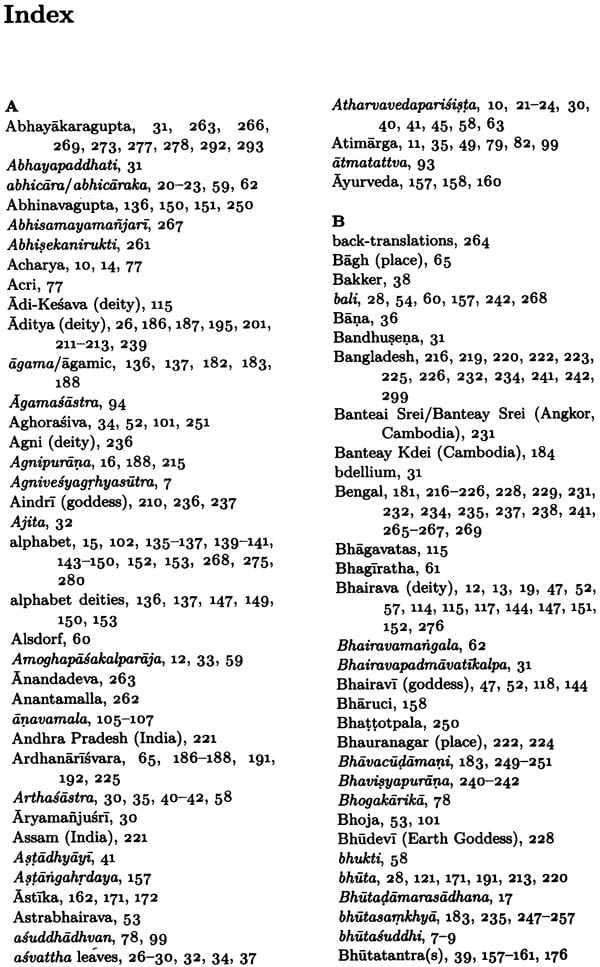
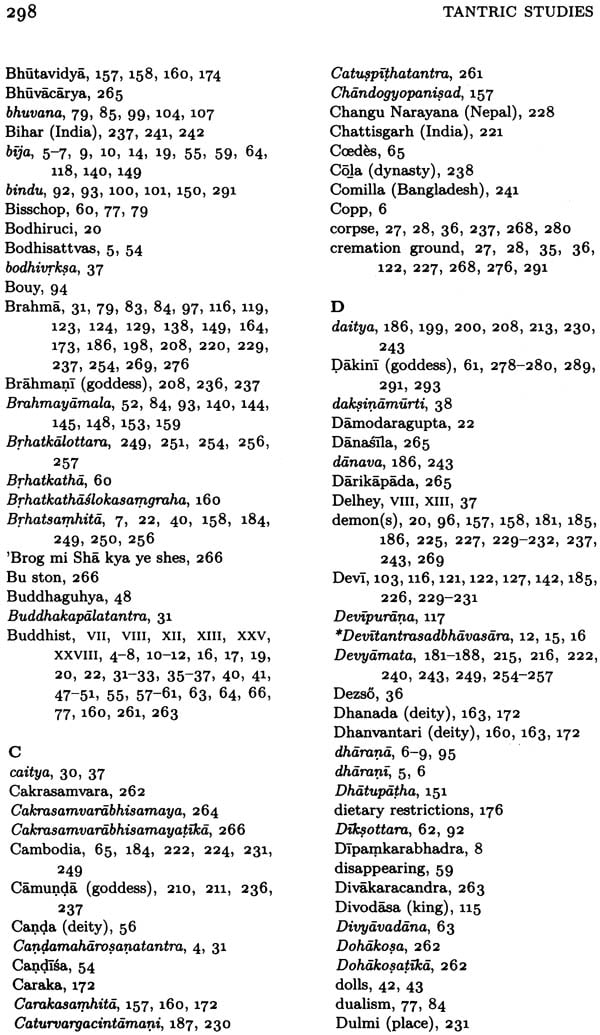

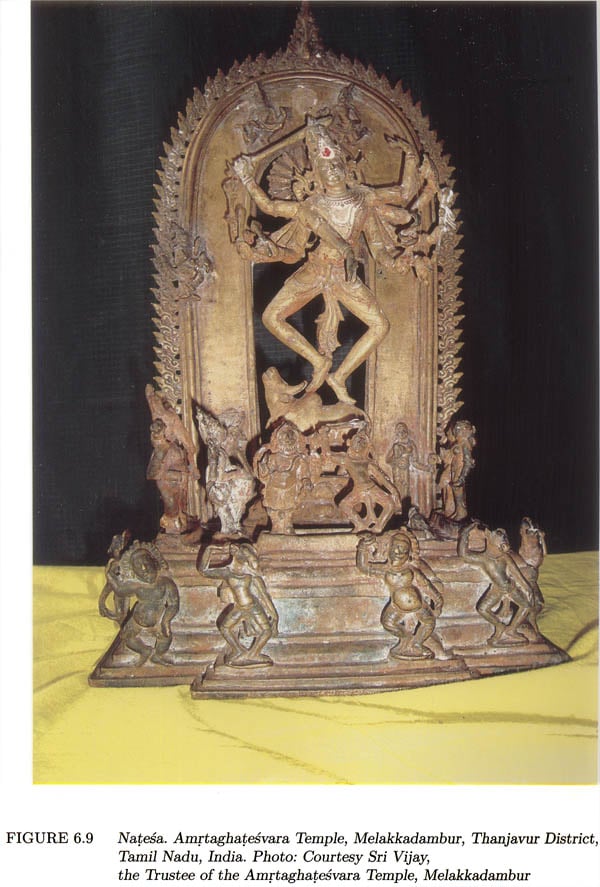
Send as free online greeting card
